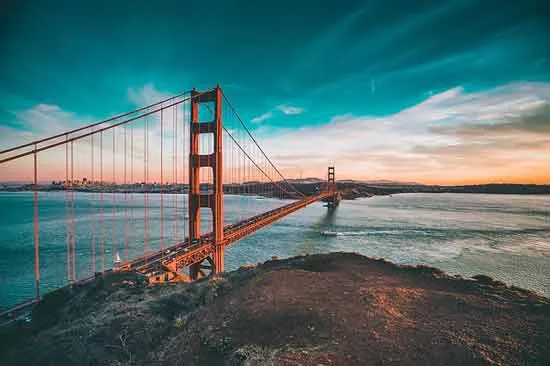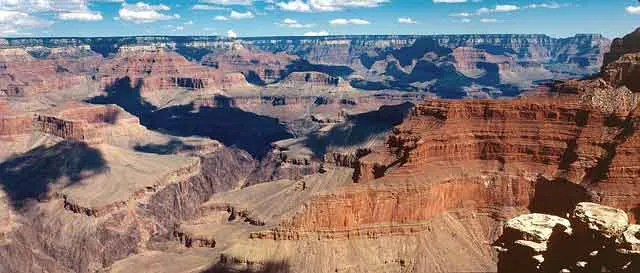Wyoming, the mountainous western state of the United States, is renowned for its unspoiled, majestic beauty and seemingly endless open spaces. From the magnificent granite peaks of the Teton Range to the otherworldly terrain of Yellowstone National Park, Wyoming is a paradise for those who love exploring nature and seeking outdoor adventures. And there’s no better way to fully experience the beauty of Wyoming than camping.
If you’re dreaming of an unforgettable camping trip in Wyoming, you’ve come to the right place. This article will provide you with a detailed guide on how to organize a perfect camping trip, from choosing the right time and location, preparing essential gear, to exciting activities you can experience. Let’s discover the secrets to making your Wyoming camping trip a memorable adventure!
Why Wyoming is the Ideal Camping Destination
Wyoming is not just a state; it’s an experience. With its vast area and sparse population, Wyoming offers a sense of freedom and escape from the hustle and bustle of city life. It boasts countless wilderness areas, from national forests to state parks and national recreation areas, each with its own unique beauty and appeal.
Diverse Natural Beauty: Wyoming boasts a stunning array of natural landscapes. You can camp beside crystal-clear lakes, in the shade of vast pine forests, or on grasslands stretching to the horizon. This topographical diversity creates endless opportunities to explore and experience new things every day.
Wildlife Paradise: Wyoming is home to many rare wildlife species, including moose, bison, black bears, wolves, and bald eagles. Camping in Wyoming offers a fantastic opportunity to observe these animals in their natural habitat (always maintaining a safe distance and respecting the wilderness, of course).
Abundant Outdoor Activities: Whether you enjoy hiking, fishing, kayaking, rock climbing, or simply relaxing and enjoying the fresh air, Wyoming has something to offer. Camping is the perfect starting point to engage in all these activities and more.
Quiet and Peaceful Space: Away from the noise and pollution of the city, camping in Wyoming is a chance to truly connect with nature and find inner peace. As night falls, you’ll witness a sky full of sparkling stars, a sight rarely seen in urban areas.

Detailed Planning for Your Wyoming Camping Trip
To ensure your Wyoming camping trip is smooth and memorable, detailed planning is crucial. Here are the steps you need to take:
1. Determine the Ideal Time
The best time for camping in Wyoming is from late spring to early fall (roughly May to September). Summer (June to August) is peak season, with the warmest and most pleasant weather, but it’s also the busiest time for tourists, and service prices may be higher.
Spring (May – June): The weather can still be chilly, especially at night and in high mountain areas. However, this is when wildflowers bloom, the scenery is beautiful, and there are fewer tourists.
Summer (June – August): The weather is warm and sunny, ideal for outdoor activities. However, be prepared for sudden showers, and temperatures can rise in the middle of the day.
Fall (September – October): The weather is cool and pleasant, the leaves turn vibrant yellow and red, creating a romantic landscape. This is also a great time for wildlife viewing.
Winter (November – April): Winter in Wyoming is very cold and harsh, not suitable for regular camping. However, if you are adventurous and experienced in winter camping, this can be a unique experience.
2. Choose a Suitable Campsite
Wyoming has countless excellent camping locations, from fully developed campgrounds with amenities to remote wilderness areas.
Developed Campgrounds: Usually located in national parks, national forests, or state parks. These campgrounds often have amenities such as restrooms, water faucets, picnic tables, fire pits, and sometimes electricity and water hookups. You need to make reservations, especially during peak season.
Dispersed Camping: Allows free camping in designated areas within national forests or public lands. Dispersed camping has no amenities, requiring you to be self-sufficient and adhere to the “Leave No Trace” principles.
Some Popular Camping Locations in Wyoming:
- Yellowstone National Park: Many diverse campgrounds, from Madison Campground by the Madison River to Grant Village Campground near Yellowstone Lake.
- Grand Teton National Park: Jenny Lake Campground and Gros Ventre Campground are popular choices with stunning mountain views.
- Shoshone National Forest: Pahaska Campground near the east entrance of Yellowstone offers a more wilderness experience.
- Curt Gowdy State Park: Famous for mountain biking and hiking, with campgrounds like Stone Creek Campground.
When choosing a campsite, consider factors such as:
- Desired Experience Type: Do you want a campground with amenities or a wilderness experience?
- Amenities: What amenities do you need (restrooms, water faucets, electricity…)?
- Activities: What activities do you want to participate in (hiking, fishing, boating…)?
- Accessibility: Is the road to the campsite easy to access? Is your vehicle suitable?
3. Make Reservations in Advance (If Necessary)
For developed campgrounds, especially in national parks and during peak season, making reservations in advance is essential. You can book online through websites like Recreation.gov. It’s advisable to book as early as possible, possibly months in advance, to ensure availability and get a good spot.
For dispersed camping, reservations are usually not required, but you need to thoroughly research area regulations and obtain permits if necessary.
4. Prepare Camping Gear
The list of camping gear can be extensive, but here are the basics you need to prepare:
Camping Equipment:
- Tent: Choose a tent suitable for the number of people and weather conditions.
- Sleeping Bag and Sleeping Pad: Choose types suitable for the expected temperatures.
- Camping Table and Chairs: Convenient for eating and living.
- Flashlights, Tent Lights: Ensure lighting at night.
- Stove and Fuel: For cooking (portable gas stove, alcohol stove…).
- Cooking and Eating Utensils: Pots, pans, bowls, chopsticks, spoons, knives, cups…
- Water Bottles and Water Filtration System: Ensure sufficient drinking water.
- Food Storage Containers: Keep food safe and away from wildlife.
- Multi-tool Knife, Small Axe, Shovel: Useful tools for camping.
- Rope, Tent Stakes, Hammer: For setting up the tent and securing ropes.
- Trash Bags: Maintain environmental hygiene.
Clothing and Personal Items:
- Weather-Appropriate Clothing: Warm jacket, raincoat, long pants, shorts, T-shirts…
- Hiking Boots: Comfortable and waterproof.
- Socks: Bring enough socks for daily changes.
- Underwear: Sufficient for the number of camping days.
- Hat, Sunglasses, Sunscreen: Protect from the sun.
- Personal Medications, First Aid Kit: Prepare for emergencies.
- Personal Hygiene Items: Toothbrush, toothpaste, soap, shampoo…
- Towel: Quick-drying towel is a good choice.
- Map, Compass or GPS: For navigation and avoiding getting lost.
- Mobile Phone, Power Bank: For communication and taking photos (but remember that cell service may be weak or non-existent in some areas).
Food and Drinks:
- Easy-to-Prepare and Store Food: Canned goods, instant noodles, dried food, cold cuts, cheese, fresh fruits and vegetables…
- Spices: Salt, pepper, sugar, favorite spices…
- Drinks: Bottled water, tea, coffee, juice…
- Snacks: Cookies, snacks, dried fruit…
5. Plan Activities
Camping is not just about setting up a tent and sleeping in the woods. Plan activities to make your trip more exciting:
- Hiking: Wyoming has countless hiking trails with varying difficulty and scenery.
- Fishing: Wyoming is famous for trout and salmon fishing. A fishing license is required.
- Kayaking, Canoeing: Many lakes and rivers in Wyoming are suitable for boating activities.
- Climbing: The Teton Range is a paradise for climbers.
- Wildlife Viewing: Yellowstone and Grand Teton are great places for wildlife observation.
- Sightseeing: Explore famous landmarks like Old Faithful, Grand Prismatic Spring, Jenny Lake…
- Relax and Enjoy Nature: Read a book, admire the scenery, listen to music, or simply enjoy the fresh air.

Tips For A Successful Wyoming Camping Trip
- Research the campsite thoroughly: Read reviews, check maps, learn about amenities and regulations.
- Check the weather forecast: Prepare for bad weather conditions.
- Arrive early to choose a good spot: Especially during peak season.
- Set up the tent and campsite properly: Ensure the tent is sturdy and safe.
- Store food properly: Avoid attracting wildlife. Use bear-resistant food containers if necessary.
- Build a fire safely: Only build fires in designated areas and always have someone supervising. Extinguish the fire completely before going to bed or leaving the campsite.
- Maintain personal and campsite hygiene: Use restrooms or dig a proper latrine. Collect and carry out trash.
- Respect nature and wildlife: Do not feed wildlife, keep a safe distance, and avoid making loud noises.
- Inform relatives or friends about your itinerary: To ensure safety in case of emergency.
- Always carry a map, compass or GPS and know how to use them.
- Prepare for surprises: Camping is an adventure, be ready to face challenges and enjoy unexpected moments.
Conclusion
Camping in Wyoming is a fantastic experience, offering a chance to explore unspoiled natural beauty, enjoy fresh air, and create unforgettable memories. With careful preparation and an adventurous spirit, you can organize a successful and memorable camping trip in this beautiful state. Pack your bags and discover Wyoming your way!